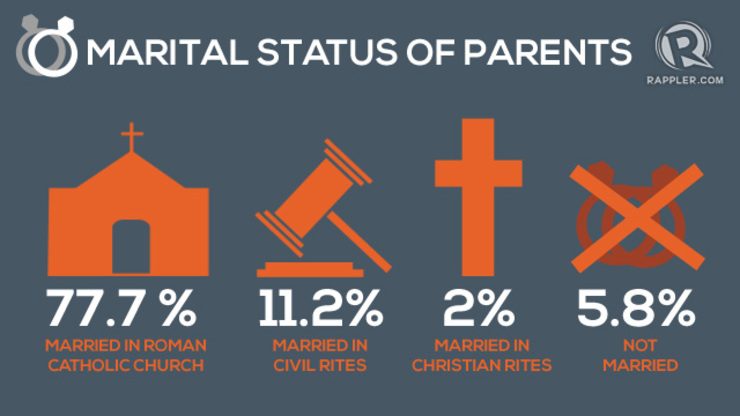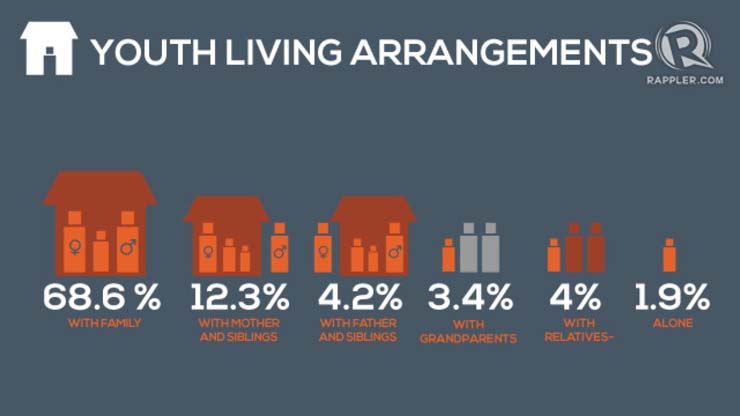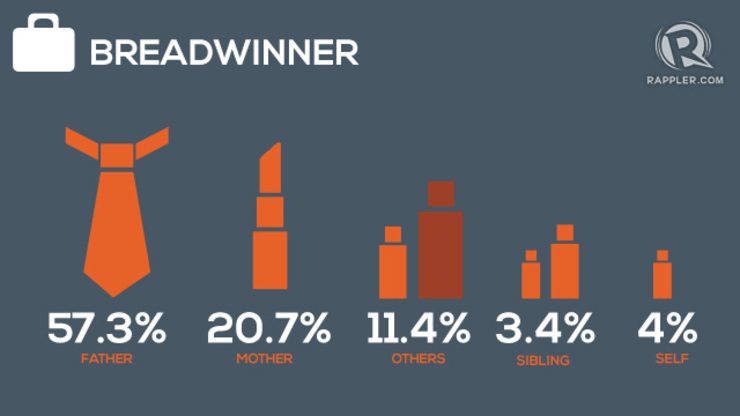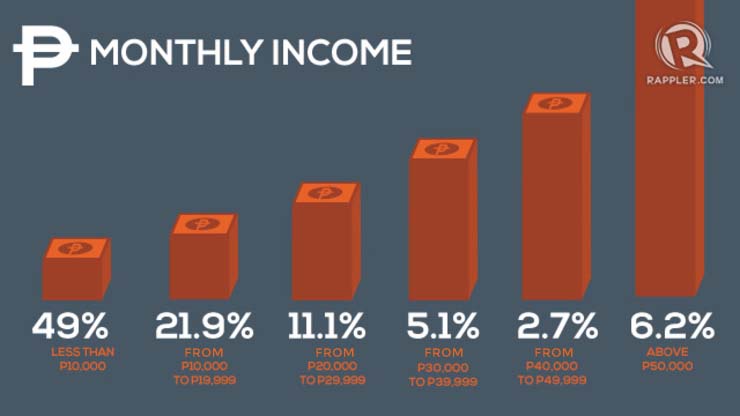SUMMARY
This is AI generated summarization, which may have errors. For context, always refer to the full article.

AT A GLANCE
- 8 in 10 Filipino Catholic parents are married in Catholic rites
- 1 in 10 are married in civil rites
- 7 in 10 youths say their family is intact
- 13% of Filipino Catholic families consist of single parents
MANILA, Philippines – What kind of Filipino Catholic family will Pope Francis encounter when he meets them during his 5-day visit to the Philippines?
One of the highlights of the papal visit is a meeting with Filipino families Friday, January 16, at the Mall of Asia Arena.
Addressing current family issues and concerns have been a hallmark of the Holy Father’s papacy. In October last year, he convened an Extraordinary Assembly of the Synod of Bishops to discuss “pastoral challenges of the family in the context of evangelization.”
In the Philippines, the Church has identified 3 major challenges besetting the Filipino family: “poverty, overseas Filipino workers and persons with disability.”
Demographically, what’s the current composition of the Filipino Catholic family?
Based on a nationwide youth survey commissioned by the Catholic Bishops’ Conference of the Philippines, it is far from ideal.
Marital status
Apart from their religiosity, influences and religious practices, a total of 2,110 youth respondents were asked about their current family situation. The findings confirm the growing Church concern about the breakdown of the Filipino family.
In terms of marital status, almost 4 in 5 of the respondents said their parents are married in Catholic rites, while more than 1 in 10 said their parents were married in civil rites.
About 5.8% said their parents are not married, while only 2% said their parents were wed in Christian rites.
The figures validate other survey results which indicate an increasing number of Filipino couples resorting to live-in arrangements or getting married in civil rites.
Broken family
Keeping the marriage vow is another matter.
About 7 in 10 respondents indicated that their family is still intact, meaning their fathers and mothers are living together. On the other hand, almost 1 in 10 said parents “are not living together,” while a total of 13% said they are orphaned, with either their father or mother already deceased.

Still, researchers say the figures reflect a positive status of the Filipino Catholic family. “Notwithstanding, and in the wake of the alarming increase in broken families here and abroad, it is good to know that many of the respondents are living with both parents who were generally married in Catholic rites.”
“Given these findings, it is safe to assume that the respondents 1) enjoy being raised and guided by their married father and mother, and 2) benefit from the relative stability they need in order to grow and mature as individuals.”
As for those with separated parents or with one of the parents already deceased, the researchers expressed concern over their plight. “Given the importance and central role that intact families play on the [lives of] children and youth, we can only wonder what impact separation and single parenting have on their integral well-being. Are they suffering in silence or living their lives in quiet desperation? Or have they accepted this sad factor of life and in the process have become more resilient and more persistent in facing its many challenges?”
Living arrangements
In terms of living arrangements, a similar percentage of youth (68.8%) said they lived with their parents. For those with broken families, more than 12% said they lived with their mother, while only 4% said they lived with their father. Another 3% said they live with their grandparents.

Breadwinner
In the Filipino Catholic family, the father remains the primary breadwinner, but almost half of the respondents said the family’s average income amounts to only P10,000 a month.
One in 5 indicated that the matriarch is the family breadwinner, while one in 10 said “others” support the family financially.

In terms of family income, 2 in 5 respondents said monthly income ranges from P20,000 to P50,000. A little over 20% said the family income ranges from P10,000 to P19,999.

A matter of serious concern is the level of education attained by most Filipino youth. Almost 40% of the youth respondents said they have “some high school education,” with only 19% saying they have finished college. Almost 30% said they had “some college education” while only 9% said they finished high school. – Rappler.com
Add a comment
How does this make you feel?
There are no comments yet. Add your comment to start the conversation.